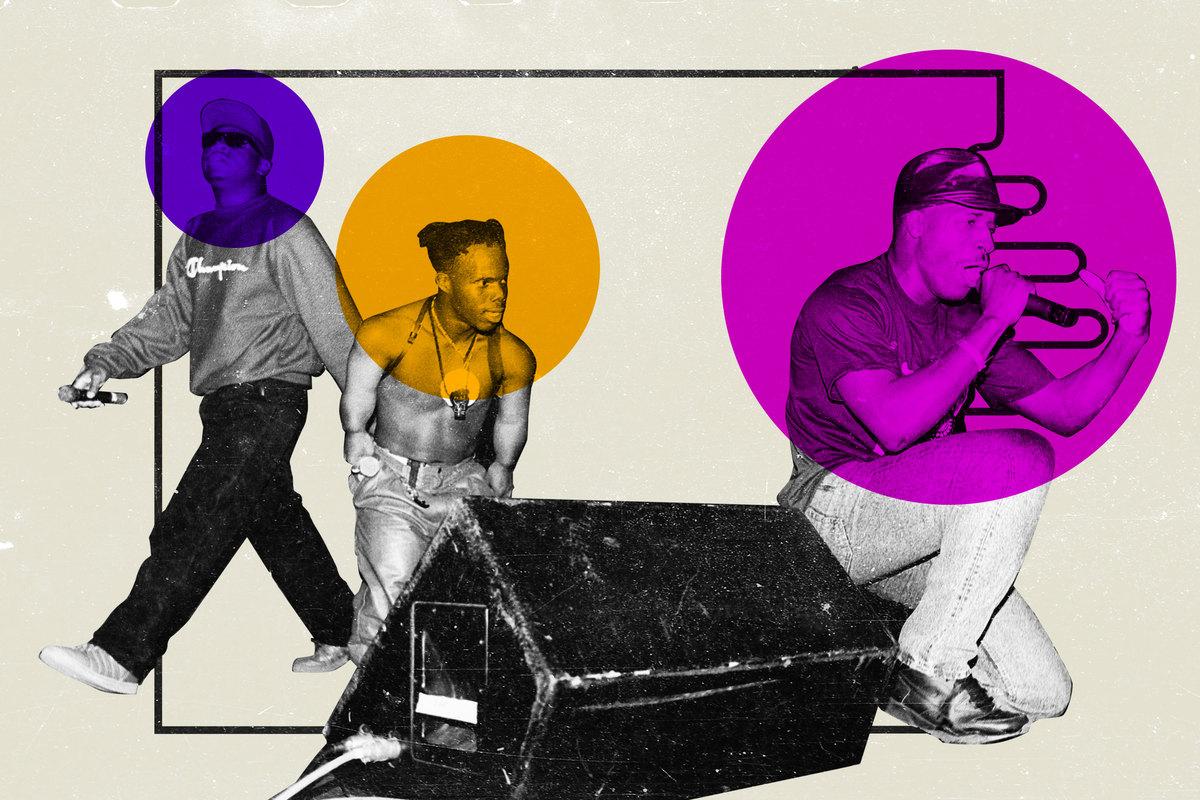
Grunge. Wu-Tang Clan. Radiohead. “Wonderwall.” The music of the ’90s was as exciting as it was diverse. But what does it say about the era—and why does it still matter? On our new show, 60 Songs That Explain the ’90s, Ringer music writer and ’90s survivor Rob Harvilla embarks on a quest to answer those questions, one track at a time. Follow and listen free exclusively on Spotify. Below is an excerpt from Episode 6, which looks at the backstory and legacy of the Geto Boys’ 1991 classic, “Mind Playing Tricks on Me.”
James Prince, the founder and CEO of Rap-A-Lot Records, put the first Geto Boys lineup together in the mid-’80s, and that lineup would mutate constantly. The group’s first song, from 1986, was called “Car Freak,” and their first album, from 1988, was called Making Trouble, and at this point Willie D and Scarface aren’t involved at all, and Bushwick Bill is only involved as a hype man and dancer. The album’s sound, as provided by DJ Ready Red with Sire Jukebox and Prince Johnny C rapping over top, is extremely Run-DMC. Here is an excerpt from a song called “No Curfew,” about their desire to not have a curfew.
So this didn’t last. J Prince’s first big revelation was to let Bushwick Bill rap, and also to replace those earlier rappers with Houston natives Willie D and Scarface, who usually wrote Bushwick Bill’s rhymes. (Willie D apparently won a billion rap battles in a row at a mythic Houston club called the Rhinestone Wrangler; there’s a great book of interviews called Houston Rap Tapes where he brags about beating Vanilla Ice there, a bunch of times. Quote: “I fucked him up like I fucked everybody else up.” You could say he flew like a harpoon, daily and nightly.)
The other big revelation was for the group to stop trying to sound like they were all from New York City, or sound like New York City, or sound like they wish they were in New York City. They were proud to rep Houston and, of course, inspired thousands of other Houston rappers to be proud of being from Houston, but even better they helped establish the idea of being proud of wherever you were from, even if it wasn’t New York or L.A. Dallas. Memphis. Cleveland. Flint. Atlanta. Wherever. Starting with 1989’s Grip It! On That Other Level, you know what the Geto Boys represent, and where they’re coming from, and where they want to go, and whom Willie D, for starters, is willing to steamroll to get there.
That record also got Rick Rubin’s attention. He signs the Geto Boys to his new Def American label. He suggests they change the spelling of their name from G-H-E-T-T-O to just G-E-T-O, for commercial purposes. He’s a genius. And he works on a self-titled 1990 remix album, mostly reworked older songs, a few new ones, lyrical content spanning from murder to rape to necrophilia and whatnot. That’s another big philosophical change, in this era. We’ve moved beyond the curfew issue.
Geto Boys is a great album, but Geffen Records, which distributes Def American’s albums, refuses to distribute it, due to the murder and necrophilia and whatnot. The cover of Geto Boys, in fact, is remarkable in its own right: It looks like the Beatles’ Let It Be, except it’s Bill, Willie, Scarface, and Ready Red taking mugshots, and at one point the CD had a sticker that read, “Def American Recordings is opposed to censorship. Our manufacturer and distributor, however, do not condone or endorse the content of this recording, which they find violent, sexist, racist, and indecent.”
Which brings us to We Can’t Be Stopped. DJ Ready Red worked on the album but left before it was finished; accounts vary, but in that Houston Rap Tapes book he cites “funky arithmetic.” But you can still hear his voice on the title track, and you can also hear the Geto Boys observe that Geffen Records proudly distributed the likes of Guns N’ Roses, or for that matter, shock-comic Andrew Dice Clay.
The Geto Boys were irate, and they were nasty: You did not want to get caught with this tape in your Walkman at school. But they were also funny, and charismatic even at their nastiest. They’d received, at this point, a quite incendiary mixture of respect and disrespect. A muzzle can be a bullhorn.
So We Can’t Be Stopped has a song called “Gotta Let Your Nuts Hang.” (Scarface is for it.) It has a sort of answer song to Queen Latifah’s “Ladies First” called “I’m Not a Gentleman,” in which Willie D raps about the idea of male chivalry. (He’s against it. Willie says the song was his girlfriend’s idea.) It has a Bushwick Bill showcase called “The Other Level,” about a threesome. (He had one.) The question of whether any of this has aged well, musically or otherwise, is very much the wrong question, though I will note there’s another quite striking Bushwick Bill showcase called “Fuck a War,” this referring to the first Gulf War. But “Mind Playing Tricks on Me” drops on all this like a bomb, in that all three rappers are suddenly shell-shocked, and plagued by fear and doubt and remorse, and confronting terrifying demons who turn out to be imaginary. It’s shocking in an entirely different way to hear Willie D start bragging but immediately pivot to a much frailer and darker place.
Willie ditches his car and preps for a gunfight that turns out to involve “three blind, crippled and crazy senior citizens” who aren’t armed and weren’t tailing him. Bushwick Bill gets in a Halloween brawl that turns out to involve zero other people and leaves him bashing his bloody fists into the pavement. It wasn’t even Halloween. Whereas Scarface ends up just “staring at the woman on the corner.” This is Scarface’s show: His sample of Isaac Hayes’s “Hung Up on My Baby” is easily the prettiest moment in the whole Geto Boys catalog, to the extent that the group ever aspired to prettiness at all. And he sets the lyrical tone on “Mind Playing Tricks on Me,” too. He gives himself nowhere to hide and encourages his partners to stop hiding.
Bushwick Bill gets the last verse on “Mind Playing Tricks on Me.” It starts with him and the other Geto Boys robbing trick-or-treaters, because of course it does, but soon they’re in a fight with the 6- or 7-foot lawman he’s seen in his sleep. His deepest, darkest fantasies tell you a lot about his reality.
To hear the full episode, click here, and be sure to follow on Spotify and check back every Thursday for new episodes on the most important songs of the decade. This excerpt has been lightly edited for clarity and length.

